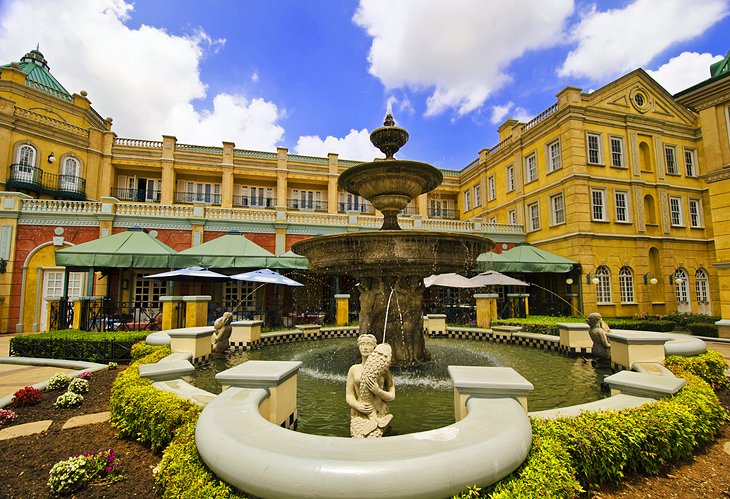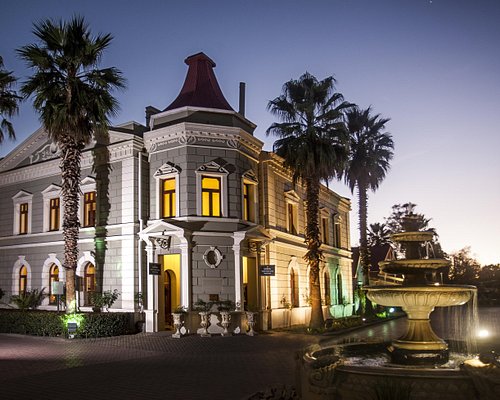Facts About Johannesburg North Attractions Uncovered
Facts About Johannesburg North Attractions Uncovered
Blog Article
The smart Trick of Johannesburg North Attractions That Nobody is Discussing
Table of ContentsThe 8-Minute Rule for Johannesburg North AttractionsThe smart Trick of Johannesburg North Attractions That Nobody is Talking AboutThe 10-Minute Rule for Johannesburg North AttractionsSome Ideas on Johannesburg North Attractions You Should KnowSome Known Facts About Johannesburg North Attractions.The 6-Minute Rule for Johannesburg North Attractions
The city grew on the side of the Witwatersrand Main Reef, a below ground stratum of gold-bearing quartz-silica corporation that arcs for hundreds of miles under the Highveld - Johannesburg North attractions. Many of the gold mines in the city stopped operation in the 1970s, yet in its day the Witwatersrand gold market accounted for even more than 40 percent of the world's annual gold production.Johannesburg has a pleasant climate. Summertime temperature levels average regarding 75 F (24 C); winter season temperatures average about 55 F (13 C) and only periodically dip below cold. The city delights in concerning eight hours of sunshine each day in both winter and summer season. Rainfall standards about 28 inches (700 millimetres) per annum, however the overall differs substantially from year to year.
What rain the city obtains drops almost specifically in the summer months, often in spectacular late-afternoon electric storms. Air air pollution presents a significant problem, specifically in the winter season, when thermal inversions impede the westward circulation of air from the Indian Ocean. Contamination is most severe in the densely cleared up Black areas on the city's perimeter, where lots of citizens still rely upon coal for gas.

Some Ideas on Johannesburg North Attractions You Need To Know
The equilibrium of the city is inhabited by whites. Holiday accommodation varies in character and quality. Soweto is well-known for its unlimited rows of municipally constructed, two-room matchbox homes, yet it additionally has a few flourishing territories along with brimming squatter camps, where 10s of thousands live without water, electrical power, or sanitation centers.
Physical development, although somewhat restricted by transport, continued swiftly as migration to South Africa, and Johannesburg particularly, boosted drastically. This problem was resolved in the 1930s when the vehicle was presented in mass manufacturing to South Africa. Cars were, generally, restricted to the affluent, and allowed them to transfer to the north of the city and commute right into the centre.
The majority of inadequate suburbs were blended, with bad blacks click for source and whites cohabiting, although the rich suburbs were usually booked for whites. This transformed with the election of the National Party in the 1948 political elections, who started to formalise the system referred to as racism. Discrimination formally marked which suburban areas each race might live in under the Team Locations Act.
The approximated populace of the area is 200,000, [] The number of individuals living in the internal city on a casual basis is unknown, as many are prohibited immigrants. A lot of higher-income citizens and white people have moved to the north residential areas and have actually been changed by lower-income black individuals. The unemployment, education, and age profiles of the area are all unidentified, as a result of the problem of acquiring reputable info about the location.
Getting The Johannesburg North Attractions To Work
Yeoville and Bellevue have a mix of apartment and solitary property systems on little great deals. The region is situated on a hilly divide that ranges from east to west. The most noticeable geographical attribute is Observatory Ridge, which is called for the huge observatory located on it. The leisure spaces are no more used, due to safety problems.

Johannesburg Arena, a training ground for both the Golden Lions and Orlando Pirates, is nearby. The eastern suburban areas of Johannesburg are situated in the city's 7th [] and 9th [] areas. The area is also functionally integrated with East Rand border towns outside of the official limit of Johannesburg, such as Bedfordview and Edenvale (both part of Ekurhuleni Metropolitan Town).
The Ultimate Guide To Johannesburg North Attractions
R. Tambo International Airport). The eastern residential areas are some of the oldest locations of Johannesburg, there are huge neighborhoods of Jewish and other European histories, most of the populace is English talking. There are three fairway along with a number of safeguarded ridges with viewsites. There are numerous strong and up-market entertainment and buying locations in the eastern such as the Eastgate Shopping Centre and the Greenstone mall.
Originally constructed to house male migrant workers, several have been enhanced as houses for pairs and families. The suburban area was not historically enabled to produce work centres within the location, so virtually all of its locals are commuters to other components of the city.
Some Ideas on Johannesburg North Attractions You Should Know
The domestic areas in the north suburbs are generally official, with no significant locations of casual housing, or real estate that lacks a permanent framework. This is an established location, there is a pattern of land recommended you read use change from residential to business, especially along major arterial roadways and around well-known nodes.
The location is well attached to road networks, especially along the north-south axis created by the M1 and N1. Roadways to the eastern and west are less well created, as there are no freeways taking a trip because instructions. Towards the north border of the city, the density of growth reduces, leaving big locations of undeveloped land around Midrand.
The Definitive Guide for Johannesburg North Attractions
, which is located on a hill overlooking the internal city and Hillbrow.
Report this page